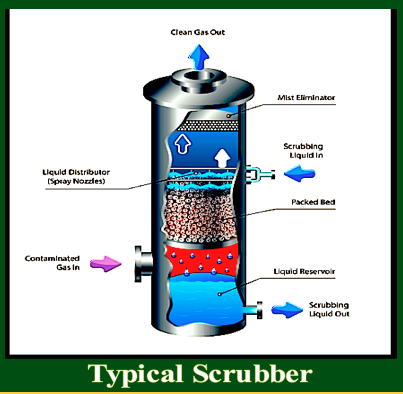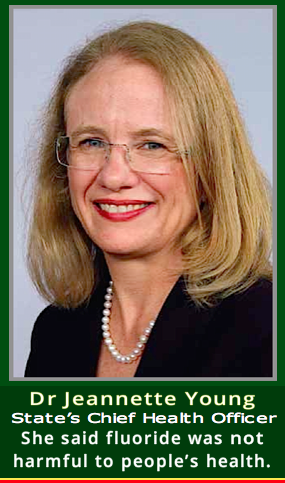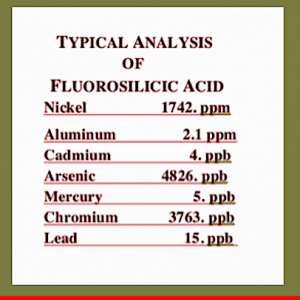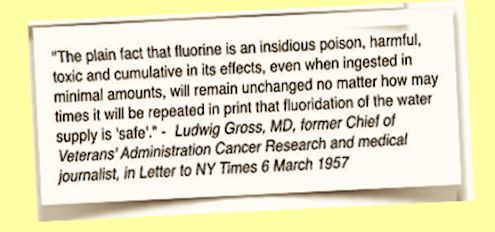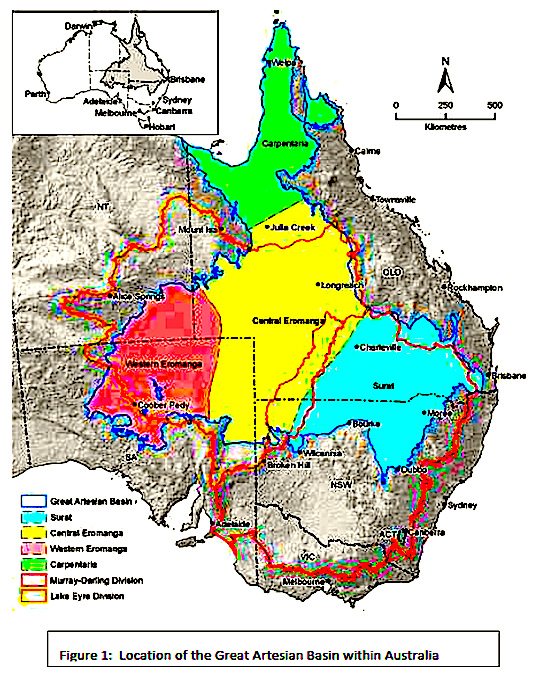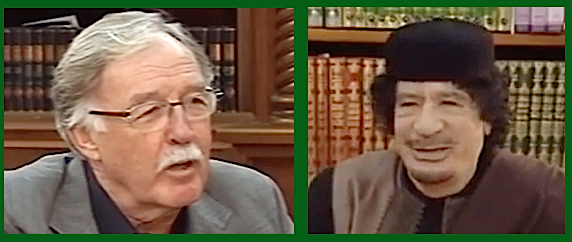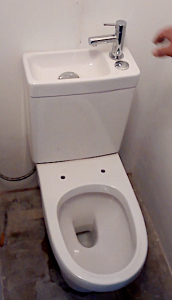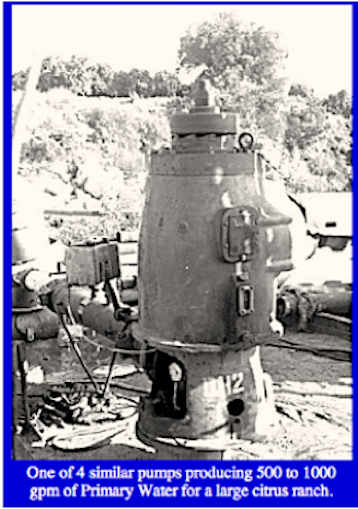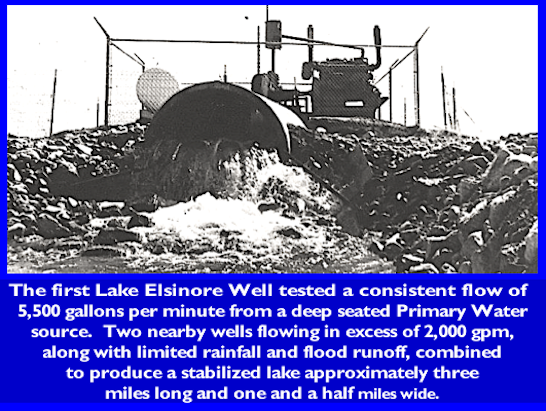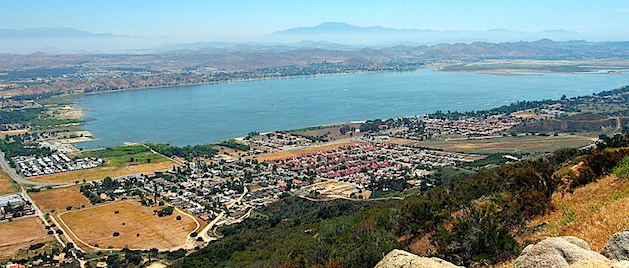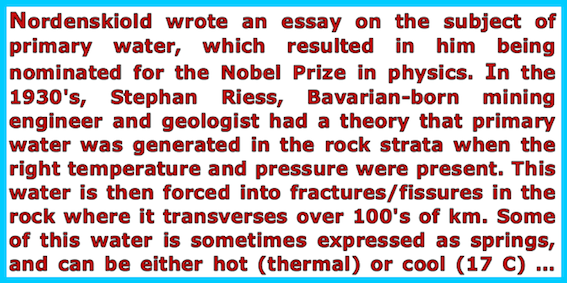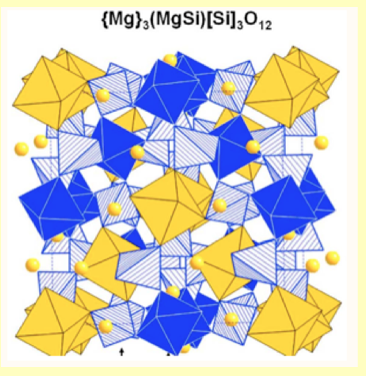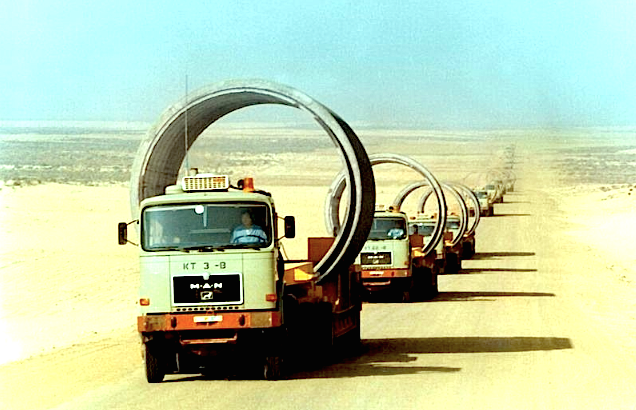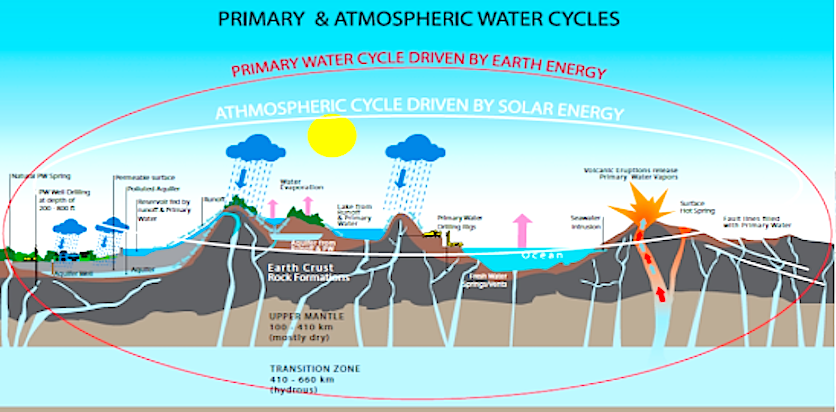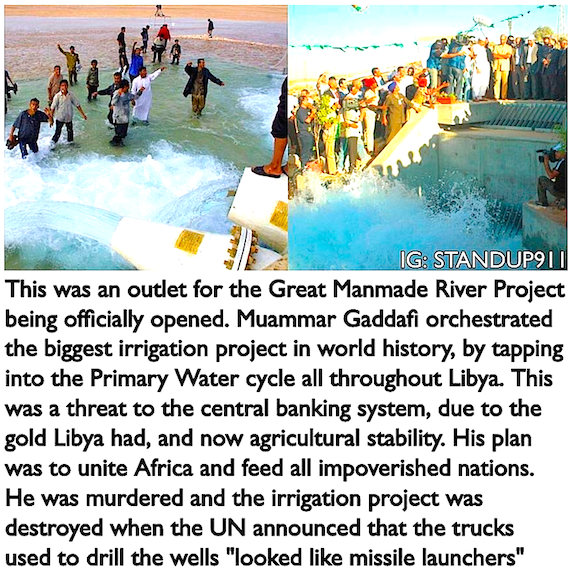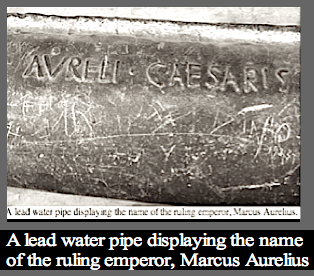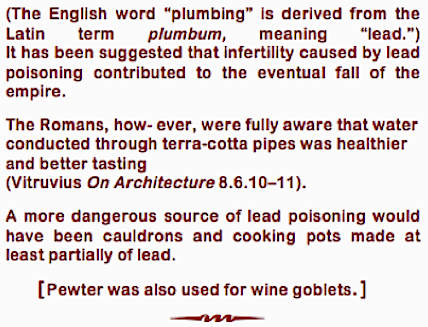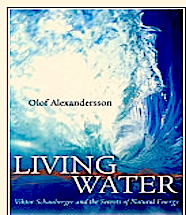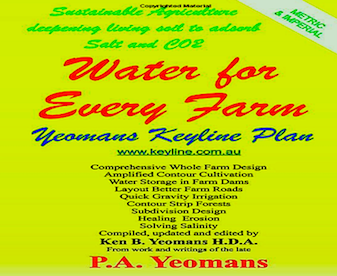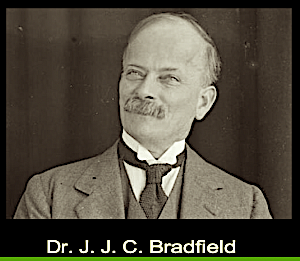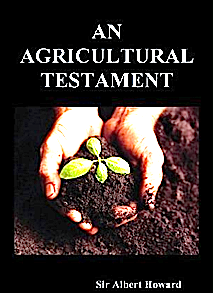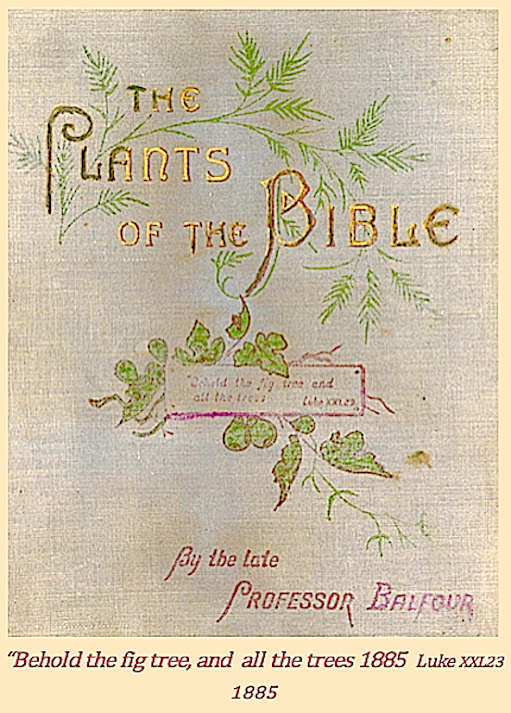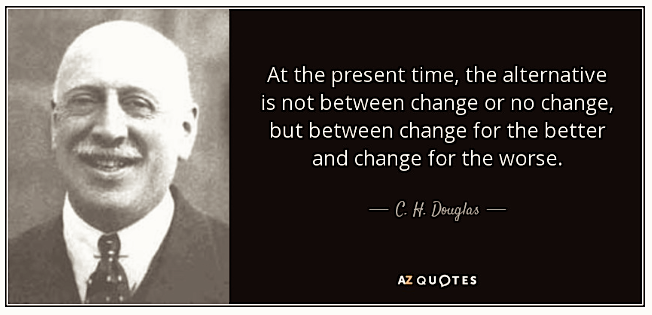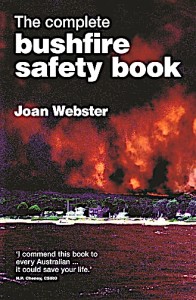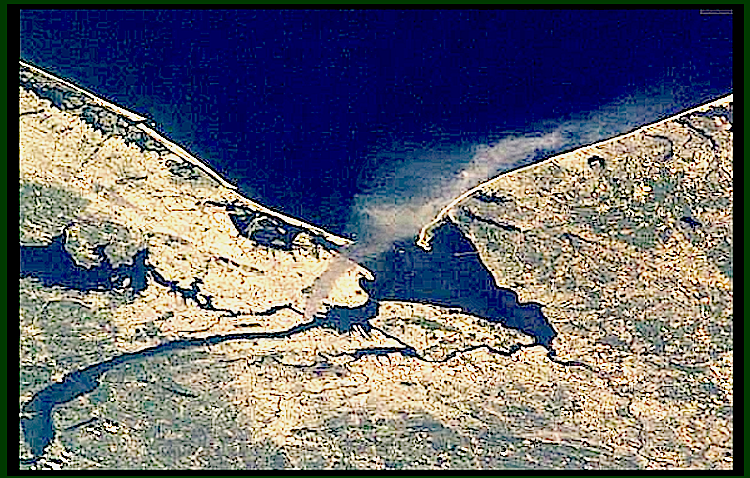Archive for month: May, 2014

“ Fluoride seeks out minerals such as magnesium and binds
with it, making magnesium unavailable to the body…”
![]()
by
Kevin Mugur Galalae
(2012)
THIS IS A
PEOPLE’S PROTECTION FORCE EMERGENCY PUBLICATION
IT CONTAINS LIFE AND DEATH INFORMATION
Please read this carefully in its entirety, distribute it widely.
This is a large PDF file – and little slow to load…
↓ ↓ ↓
Why Water, Milk & Salt Fluoridation Is Making Our Children Infertile, Feeble-Minded & Ill
We keep a copy of this in case the original is ‘lost’.
(We thank you Kevin Mugur Galalae)
.-.-.-.-.-.-.-.-.-.-.-.-.-.-.-.
“Fluoride seeks out minerals such as magnesium and binds with it, making magnesium unavailable to the body and unable to do its work. The magnesium-fluoride mineral produced is called sellaite; it is almost insoluble and ends up taking the place of magnesium in hard tissues like bone and cartilage, but its brittleness makes the bone susceptible to fracture. The reduction in available magnesium causes a decrease in enzymatic action in the body.”
Excerpts from ‘The Magnesium Miracle’ by Dr Carolyn Dean.
-.-.-.-.-.-.-.-.-.-.-.-.-.-.-.-.-.-.-.-.-.-.-.-.-.-.-.-.-.-.-
 Plasma Perfluoroalkyl and Polyfluoroalkyl Substances Concentration
Plasma Perfluoroalkyl and Polyfluoroalkyl Substances Concentration
and Menstrual Cycle Characteristics in Preconception Women
[ Note all the ‘F’s are for Fluoride ]
Wei Zhou,1* Lulu Zhang,2,3* Chuanliang Tong,4 Fang Fang,1 Shasha Zhao,1 Ying Tian,1 Yexuan Tao,2,3 Jun Zhang1 and for the Shanghai Birth Cohort Study
Our study found that increased exposure to PFOA, PFOS, PFNA, and PFHxS was associated with higher odds of irregular and long menstrual cycle and lower risks of menorrhagia in women who plan to be pregnant. In contrast, women with higher levels of PFOA, PFNA, and PFHxS were more likely to have hypomenorrhea.
Full text → HERE ← Important
Prenatal Fluoride Exposure and Cognitive Outcomes -Mexico
.-.-.-.-.-.-.-.-.-.-.-.-.-.-.-.-.-.-.-.-.-.-.-.-.-.-.-.-.-.-.-.-.-.-.-,-.
See also: ‘ Minerals for the Genetic Code’ by Charles Walters
-.-.-.-.-.-.-.-.-.-.-.-.-.-.-.-.-.-.-.-.-.-.-.-.-.-.-.-.-.-.-
Alum. Aluminium sulphate was removed from Sydney water
supply in 1994 – suspected of causing Alzheimer’s disease.
aluminium hydroxide gel is used as a vaccine adjuvant.
-.-.-.-.-.-.-.-.-.-.-.-.-.-.-.-.-.-.-.-.-.-.-.-.-
Bone/joint problems-Fluorosis
-.-.-.-.-.-.-.-.-.-.-.-.-
Factors Often Overlooked In Fluoridation Research
.-.-.-.-.-.-.-.-.-.-.
“FLUORIDE POLLUTION AND ITS EFFECT ON WATER AND
VEGETATION IN BIRBHUM DISTRICT, WEST BENGAL”
.-.-.-.-.-.-.-.-.-.
“Pharmafoods” – How to hijack your brain and body.
.-.-.-.-.-.-.-.-
Ovarian Cancer & Fluoride
-.-.-.-.-.-
Fluoride and Novichok
“As is normal, the solution to pollution is dilution.
You poison everyone a little bit rather than poison a few people a lot.
This way, people don’t know or notice what’s going on.”
DISCLAIMER
Some of the articles or pieces posted on this web site contain copyrighted material.
Credit is given to the author and links are provided to the original source.
We believe that this constitutes a ‘fair use’.
This post may be of special interest to environmentalists, farmers, foresters and gardeners.
New water sources – ‘Primary Water’ and water treatments, recent findings, land and water managements, irrigation, book lists, and web-sites are presented, plus some information
on fire management, and its history in Australia, banking, space research, health and
some modern history updates. Be Amazed – Keep Reading And Watching !
Karboora
Blue Lake National Park, North Stradbroke Island, Queensland
COMMENTS ON FIRE MANAGEMENT IN AUSTRALIA
AND THE HISTORY OF FIRES IN AUSTRALIA
ARE FURTHER DOWN ON THIS PAGE
We are a non-sectarian, not-for-profit,
non-government organisation, and we are
all volunteers. We are NOT asking for money.
Last update 12th Jan. 2022
50 Tons of Cures for Coronavirus – China – Vitamin C
Sinkholes -The ground breaking truth-
Very interesting – images from around the world.
Tracking Aluminium Used to Purify Tap Water Kobe, Japan (SPX) 23 June 2016
THE GREAT AUSTRALIAN ARTESIAN BASIN UNDER THREAT
The Borax Conspiracy
How an arthritis cure has been stopped – by Walter Last
Dr. Masaru Emoto
The Japanese researcher who experimented with
the crystal forms of water
Libya’s Great Man Made River –
Watch ↓
Muammar Gaddafi Interview
with George Negus – SBS Australia
Just before Libyan Revolution [ February 2010 ]
Libya’s Great Man Made River –
~ MUCH MORE ~
❝ DESALINATION PLANTS MAY BE BAD FOR YOUR HEALTH ❞
Extract from report by Kenneth Davidson
Senior columnist at ‘The Age’
(Australia)
With his kind permission~
In Australia there are three desalination plants, two more being built, and two more proposed.
Where tests have been made available (from plants on the Gold Coast and at Kurnell in Sydney), the results show the average boron content of reverse osmosis desalinated water was about 0.5 mg/L and the level rose higher as the filters aged. Boron is a threat to public health. This is recognised by toxicologists.
The Harvard Medical School in 2008 said:
❝ Boron should not be used in children under 18. Deaths have occurred when boron was taken by mouth or applied as a topical cream on infants ❞
At the same time this conclusion was reached, the World Health Organisation and the National Health and Medical Research Council (which publishes the Australian drinking water guidelines) increased the recommended standards from 0.5 milligrams of boron per litre to 2.4 mg/L in the case of the WHO and 4.0 mg/L at the NHMRC. These doses are based on adults with a body weight of 60 kilograms (WHO) and 70 kilograms (NHMRC) respectively. This means that what may be acceptable for an adult of average or above-average weight may be harmful for children and toxic for babies. [ However see also »→ HERE ]
1) Toilet– to reverse osmosis– to tap water assumes to make fresh drinking water that is safe, but unfortunately this depends on factors that are out of the control of water districts and also will require addition of caustic soda, sodium hydroxide or Drano, into water, where sodium does not belong in fresh drinking water, to maintain the normal alkaline pH we have in Southern CA. RO removes items that are larger than the water molecule. Fluoride is only now able to be removed well by engineered RO units, where the ion is smaller than the length, and luckily larger than the width, of the water molecule. Unfortunately though, lithium, used as a drug to alter brain function and other purposes in industry, cannot be removed by RO, being at 90 picometer radius far smaller even than the tiny fluoride ion with a 119 picometer radius. Lithium is now found in community water supplies, some being natural, but much from drugs, axle grease chemicals, lithium batteries, and other chemical wastes that become disposed into sewers. Water districts do not routinely test for lithium, so any San Diego ‘approval’ of toilet-to RO-to tap water would have little meaning.
The only mechanism that can separate lithium from water to make it potable is distillation, or as in nature, evaporation of ocean water (with its dumped treated sewage) by the sun to form rain and snowfall. This information was forwarded to Mayor Sanders yesterday.
2) LITHIUM is now being touted as an anti-suicide drug that should be added to water supplies under the pretense of saving the several thousand suicide victims we have in the U.S. annually. The argument is based on the fact that lithium is often found in natural water supplies at 0.03 ppm or higher in some regions. These promoters who believe in ‘eugenics’ claim it ‘has no effects on humans’ (to silence critics) and yet at the same time claim it lowers suicide rates, which obviously if true and not a false correlation, is affecting behavior of people in ways yet unknown and with brain side effects, after permanent ingestion, not assessed. A lobotomy is known with certainty to prevent suicides–does this mean we should treat all people with a lobotomy to spare the 13,000 expected suicide victims this coming year? – Of course not. Further, the highest suicide demographic in the U.S. today is the U.S. military for reasons not certain. are we to drug the U.S. military with lithium to decrease this high suicide rate? – Again, absurd.
3) San Diego is a famous fine tourist destination, where people from around the world come to visit a perceived paradise. The tourism industry in the city would be placed at severe risk once any toilet to RO to tap water program were instituted city-wide. How many visitors would feel good about using water in a city where water was so scarce people were forced into such a recycling mode?
4) San Diego’s Mayor already approved fluosilcic acid contaminated materials to be injected into all city water supplies (while blaming this on a CA law intended to help teeth but which was based on falsely correlations and extrapolated observations), so it is puzzling why the Mayor told the news media that the use of toilet–to RO–to tap is the ‘hardest decision he will ever make’. Excuse us!!, but we citizens already made the decision by voting twice against fluosilicic acid injections. For every 150 tons of fluosilicic acid added into San Diego water supplies (which began February 2011), 88 tons of contaminated water and 50 tons of sodium hydroxide (not present in natural fresh drinking water) accompany the 12 tons of fluoride it also contains. For sodium alone, this has been the straw that broke the camel’s back, where avocado production has been substantially reduced by the total sodium present in city water supplies now. Sodium abatement is a National problem, particularly in the Southwest where the Colorado River has hundreds of industrial waste emission points that are allowed to release a ton of salt daily into the River. The final injection by water districts of Drano to minimize the acidity of the fluosilcic acid treated water was sufficient to elevate sodium to 93 ppm which is known to be growth-inhibiting for many plants.
Richard Sauerheber, Ph.D. chemistry,
UCSD; currently Palomar College, San Marcos, CA
Do Australian Cities Have The Wrong Approach To Recycling Water?
Caroma Profile Toilet with Water Saving Integrated Dual Flush Hand Sink
MSM & info on DSMO
EVIDENCE OF ‘WET ZONE’ 410KM BELOW THE SURFACE
Meet Irish Pioneer -Tom Prendeville
MIRACLE GROW: Treated water results in larger, healthier crops, says
Professor Austin Darragh of Limerick University 25 August 2013
A groundbreaking new Irish technology which could be the greatest breakthrough in agriculture since the plough is set to change the face of modern farming forever.
The technology – radio wave energised water – massively increases the output of vegetables and fruits by up to 30 per cent. Not only are the plants much bigger but they are largely disease-resistant, meaning huge savings in expensive fertilisers and harmful pesticides.
Extensively tested in Ireland and several other countries, the inexpensive water treatment technology is now being rolled out across the world. The technology makes GM obsolete and also addresses the whole global warming fear that there is too much carbon dioxide in the air, by simply converting excess CO2 into edible plant mass.
Developed by Professor Austin Darragh and Dr JJ Leahy of Limerick University’s Department of Chemistry and Environmental Science, the hardy eco-friendly technology uses nothing but the natural elements of sunlight, water, carbon dioxide in the air and the minerals in the soil.
The compact biscuit-tin-sized technology, which is called Vi–Aqua – meaning ‘life water’ – converts 24 volts of electricity into a radio signal, which charges up the water via an antennae. Once the device is attached to a hose, thousands of gallons of water can be charged up in less than 10 minutes at a cost of pennies.
Speaking about the new technology, Professor Austin Darragh says:
“Vi-Aqua makes water wetter and introduces atmospheric nitrogen into the water in the form of nitrates – so it is free fertiliser. It also produces the miracle of rejuvenating the soil by invigorating soil-based micro-organisms.
“We can also make water savings of at least 30 per cent. When the water is treated it becomes a better solvent, which means it can carry more nutrients to the leaves and stem and percolate better down into the soil to nourish the roots, which in turn produces a better root system. Hence the reason you need less water and why you end up with larger and hardier crops,” explains Professor Austin Darragh.
Extensively tested in Warrenstown Agricultural College, the technology is being hailed as a modern day miracle.
Harold Lawler is Ireland’s foremost Agricultural Specialist. As Director of the National Botanical Gardens and former Master of Agricultural Science at Warrenstown Agricultural College, he has carried out more research on Vi-Aqua growth-enhancing technology than perhaps anyone else in the world:
“In the bedding plants we really saw a difference in the results; they were much hardier and tougher. You could drop a tray of these plants on the ground and they would not shatter, like ordinary plants.
“We also noticed that the treated plants needed far less fertiliser than the untreated ones. The roots took the nutrients in better whereas with other normal plants leaching of minerals occurs,” explains Harold Lawler.
ORIGINAL ↓
http://www.independent.ie/business/irish/wave-goodbye-to-global-warming-gm-and-pesticides-29525621.html
»→ CleanDrinking Water Out Of Thin Air ←«
Images of over six devises.
[ gpm = Gallons Per Minute ]
Lake Elisnore ↑
See the three web sites below:
[This is not the process known as recharge.]
1) Primary Water – Bill Cox
2) Primary Water Theories | Bloom the Desert
3) PrimaryWaterInstitute.org
See also the book ‘Devining’ by Christopher Bird – ISBN 354 043889
»→ MAJORITE ←«
Watch interview with Al-Gaddafi »→ HERE
~ Libya’s Great Man Made River by Muammar Gadaffi ~
Muammar Gaddafi orchestrated the biggest irrigation project in world history by tapping into Primary Water cycle all throughout Libya.
See more »→ HERE
Keep in mind the water “control” boards will NOT tell you about ‘Primary Water’. [In Australia most of them would have never heard of ‘Primary Water.] We are told water comes from rain and snow-melt which is the ‘Secondary Water Cycle’ – atmospheric water.
. We are not told about the ‘Primary Water Cycle’. All water originally comes from down below the mantel of the earths crust where hydrogen and oxygen merge creating vapour that is forced under pressure to the surface becoming the pure fresh water. We are being told water is running out and we have severe water shortages. – — This is NOT true.
[ Welcome to Planet Earth! ] 
~ LEAD IN ROMAN WATER ~
Much of the [early] Roman’s water was channeled through lead pipes.
Marcus Aurelius :
→ PEWTER ←
Extract from:
❝ …The ancient Romans used lead for making water pipes, cooking utensils, water tanks and storage vessels. Lead water pipes were used in most major cities in the empire. Wine was cheap in ancient Rome and Athens and it was contaminated with lead from as many as 14 sources during its preparation. Lead was used as part of the preservative and as a flavour enhancer. Even the Christian sacramental cups of that era were the kind that were made of lead or leaded bronze common at the time.
Apathy and gluttony have been associated with the decline of the Roman Empire.
It may have been the lead in food, water and wine which caused the apathy. Musonius, a Roman writing in the first century A.D., observed that masters were weaker, less healthy and less able to endure labor than the servant class. Those who grew up in the country were stronger than those who grew up in the city. Those who ate plain food were likely to live longer and have less of the diseases associated, by hindsight, with lead poisoning. These were “gouts,” “dropsies” and “colics.” This is as close as anyone got to discovering chronic lead poisoning in the Roman Empire and leaving a record of the hypothesis.
The rich received more than their share of lead poisoning because they could afford more of the sources of lead contamination. When soft water sits in lead pipes, it leaches the lead from the pipes. In ancient Rome, the rich controlled most of the public water outlets. The first drawn water of the morning, which had been sitting over night absorbing lead, was a privilege of the rich. The evidence suggests that the offspring of parents with lead poisoning were more likely to be underachievers and had a high infant mortality rate. Chronic lead poisoning persistently destroyed the Roman aristocracy, thus creating a scarcity of good management. Old aristocratic families died out only to be replaced by others who suffered the same fate. Nriagu conludes that lead contamination was a major cause of the decline of the Roman Empire… ❞
Credit to Dan Montgomery – Original ↓ ↓
http://www.sonic.net/kryptox/environ/lead/romans.htm
And if you think that was unwise, find out how many thousands of kiometres of asbestos water pipes
are in Australian cites and towns being damaged by fluoride and chlorine ! ! !
[ Earthlings are very slow learners! ]
↓ A short must watch ↓
Hydrothermal electricity clean and green
http://www.fix.com/blog/sifting-through-the-soil/
SIMPLE SOIL TESTS
by Kelly Roberson
↓ RECOMMENDED VIEWING ↓
Vaccines – Problems…
The Surprising Leading Contributor to Pollution: Agriculture
Vanadana Shiva speaks at “FOOD OTHERWISE” conference Netherlands 2014
↓ RECOMMENDED VIEWING ↓
” COMPREHEND AND COPY NATURE “
VIKTOR SCHAUBERGER
VIDEO
↓ RECOMMENDED VIEWING ↓
The lessons of ‘The Loess Plateau’ Nation Project (China)
↓ RECOMMENDED VIEWING ↓
HERE
~ These few books can alter your mind ~ and maybe save our planet – be amazed…
‘LIVING WATER’
Viktor Schauberger and the Secrets of Natural Energy
by OLOF ALEXANDERSSON
Translated by Kit and Charles Zweigbergk
© TURSTONE PRESS LIMITED 1982
Blood Oil – A new book by Leif Wenar
~WATER FOR EVERY FARM~ USING THE KEYLINE PLAN
by © P. A. YEOMANS 1978
~ THE CITY FOREST ~
The Keyline Plan For The Human Environment Revolution
First published 1971 – Full text on-line »→ HERE ←«
❝ Complicated – I will never think about city planning and farming in the same way again.
If you ask me, P.A. Yeomans is the Nikola Tesla of irrigation and soil building.
Before diving into this book, you should familiarise yourself with
‘Water For Every Farm’, otherwise his techniques won’t make any sense. ❞
1947, English Book – Illustrated edition. Water for the inland is a brief and vivid outline of conditions in the out-back of Queensland in which is embodied the Reid and Dr. Bradfield Water Schemes by A.W. Noakes. Noakes, A. W. (Albert William)
The Bradfield Scheme was envisaged by Dr. John Bradfield, a Queensland-born civil engineer,
who also designed the Sydney Harbour Bridge and Brisbane’s Story Bridge.
The scheme would divert water from the Tully, the Herbert and the Burdekin Rivers, across the Great Dividing Range into the Flinders and then into the Thomson River. The water would eventually flow to fill Lake Eyre.
~ PLOUGHMAN’S FOLLY ~
by Edward H. Faulkner – 1945
An engrossing simple argument about something that affects us all.
It is not just about ploughing, but the cycle of life;
how we are degrading it and how we can easily improve it…
Full text on line »→ HERE ←«
↓ This is one of the first major environmental books ↓
~ AN AGRICULTURAL TESTAMENT ~ by Sir Albert Howard 1943
Full text on line »→ HERE
More info »→ HERE ←«
This is a rare out of print book identifying what these plants
are using todays botanical names – beautifully written.
~ THE PLANTS OF THE BIBLE ~
↑ Full Text ↑
The Clifford Hugh Douglas Institute
The History Of Social Credit
Our economy is “floating on an ocean of debt”
It is well enough that people of the nation do not understand our banking and monetary system,
for if they did, I believe there would be a revolution before tomorrow morning.
~ Henry Ford, 1922
$ $ $ $ $ $ $ $ $ $ $ $ $ $ $ $ $ $ $ $ $ $ $ $ $ $ $
Your understanding of money will
never be the same after this VERY brief read ⇓
See extract → ‘It is time They Knew’
See also ↓
Barclay-Smith, C. (Colin), d. 1957
Also ↓
Should Glass-Steagall Be Reinstated?
A reinstatement of Glass-Steagall would better protect depositors. At the same time, it would create organizational disruption in the banking industry. This might be a good thing, as these banks would no longer be ‘too big to fail’, and they could be managed effectively.
SO YOU THINK YOUR BANK DEPOSITS ARE GUARANTEED – THINK AGAIN!
↑ A former principal researcher at the bank regulator APRA ↑ has revealed in a submission to a Senate inquiry that, contrary to government reassurances, Australian bank deposits are NOT guaranteed !
We r e p e a t YOUR
Australian Bank Deposits are NOT guaranteed !
US Dept. Clock
Watch this debt clock – slow to load – Do not watch this before going to bed »→ HERE
If money doesn’t grow on trees, how come Banks have branches?
Free information on banking from the public domain ↓ that deserves to be widely distributed. ↓
~ A BRIEF COMMENT ON FIRE MANAGEMENT IN AUSTRALIA ~
The Main Causes of Bush Fire Are:
Feral Cats, Foxes, Lightning, Humans,
High Fuel Loads, And Insufficient Controlled Burns.
Regular controlled burns (5-7 years) need to be carried out at night or early morning during no wind, cool air, and high humidity. The cool air will take the smoke up rather than across roads and buildings, thus reducing complaints. Scheduled burns must be cancelled if these conditions do not prevail on the scheduled day.
Any water used for fire fighting or controlled burns, to dampened down boundaries or fight fires needs to have detergent added to the water, (Not foam). Vegetation is waterproof and the detergent will spread the water over the fuel rather than have it run to waste on the ground.
It is not necessary to have hot blazing fires for hazard reduction burns – small twigs, leaves and dead grass only – just enough to reduce the chances of a ‘crown fire’. These burns do not have to be extensive – mosaic burning – patches, or strips; therefor minimal damage to the forest, this provides escapes areas for animals and also continued food supply and plant seeds for the future. [It can also help in the management of exotic weeds.] Crown fires destroy homes for humans and hollow trees for birds and animals. Fire is and will always be the constant enemy in Australia, and must be funded and manned the same as the other three defense forces, ‘A Home Fire Guard’. As wonderful the volunteers have been so far, they are not well funded and are not involved in hazard reduction burns, they fight fires, a dangerous task and the hardest work I have ever done in my life. The volunteer fire brigade is not attracting the young generation.
If we do not have controlled burns – we will suffer uncontrolled burns:
Wild Horses Help Prevent Bushfires, Not Create Them!
Extract from Australian Alert Service – 2nd September 2020
‘Bushfire Inquiry Report Downplays Fuel Loads’
The NSW Bushfire Inquiry Report released by the state government on 25 August [2020] downplays the need for to reduce fuel loads, and subscribes to climate alarmism despite expert advice to the contrary presented in numerous submissions to the inquiry. The state government has accepted all 76 recommendations in the Final Report, which it received on 31 July 2020. One of the recommendations calls upon the state government to support “more comprehensive hazard reduction at a local lever”, because in proximity to assets it’s “on balance more likely to provide help than hinder”. This is better than nothing; but a lack of emphasis on reducing fuel loads risks repeating tragedies in future [the] future…
AUSTRALIA’S HISTORY OF FIRES:
Extract from page five ‘The Australian’ 31 December 2019
These fires occurred before the myth of “Global Warming”.
Feb. 1851: Black Thursday, Victoria, 12 killed, 5 million hectares burnt, million stock lost.
Jan. 1939: Black Friday, Victoria, 71 killed, 650 homes destroyed.
Feb. 1967: Black Tuesday, Tasmania, 62 killed 1300 homes lost, 80 fires.
Summer 1974-75: Western NSW, 3 killed, 100 injured, 40 homes lost, 50,000 stock lost, 10,170 km of fencing burnt.
Feb. 1983: Ash Wednesday, Victoria – South Australia, 75 killed, 1900 hones lost.
Feb. 2009: Black Saturday, Victoria, 173 killed, 2000 homes lost.
(Watch this space for 2019 – 2020 fires.)
Fire is an enemy without a conscience-
Thoroughly researched, with up to date information on every aspect of the subject.
‘I commend this book to every Australian… It could save your life’ – N.P. Cheney, CSIRO. Bushfire Behaviour & Management Group Background to Bushfires, bushfire cycles, bushfire behaviour, how to prepare for bushfire season, the decision – evacuate or stay and what to do when bushfire threatens, are all covered.
Joan Katherine Webster is an award-winning freelance journalist, a newspaper columnist, poet, broadcaster, stage and television drama and satirical comedy writer, and an historian. In 1988, in recognition of her work on bush fires. Joan Webster was appointed consultant to the Victorian Ministry of Education to advise on bushfire safety in schools and community refuges.
In 1990 she received the Australian Fire Protection Association’s Community Service Award.
See ↓ ↓ ↓
 Australia Needs Several Breiev Be-200 To Fight Our Ever Present Enemy – BUSH FIRES ↓
Australia Needs Several Breiev Be-200 To Fight Our Ever Present Enemy – BUSH FIRES ↓
https://en.wikipedia.org/wiki/Beriev_Be-200
The Beriev Be-200 Altair (Russian: Бериев Бе-200) is a multipurpose amphibious aircraft designed by the Beriev Aircraft Company and manufactured by Irkut. Marketed as being designed for fire fighting, search and rescue, maritime patrol, cargo, and passenger transportation, it has a capacity of 12 tonnes (12,000 litres, 3,170 US gallons) of water, or up to 72 passengers.[1] – [Far more useful than the new submarines!]
Julia Roberts is Mother Nature
↓ Conservation International ↓
Nature Is Speaking
Famous Last Words on “SECRECY”
Susan Lindauer former CIA Asset
“So you thought you knew why it happened!”
Ex-CIA Asset Can Now Speak.. 10 years after 9-11
9/11 from space.
See → ‘CLEAR INTENT’ ← More
Clear Intent was a momental undertaking from authors Fawcett and Greenwood.
The fact that J. Allen Hynek put his imprimatur on the work
in the form of the book’s foreword speaks volumes.
Sign (1947–1949), Project Grudge (1949–1952), Project Blue Book (1952–1969).
– Adamski Foundation –
→ UFOs & The Bomb ←
Although most people are completely unaware of its existence, the UFO-Nukes Connection is now remarkably well-documented. U.S. Air Force, FBI, and CIA files declassified via the ‘Freedom of Information Act’ establish a convincing, ongoing pattern of UFO activity at American nuclear weapons sites extending back to December 1948
On 27 September 2010 Hastings hosted the UFO-Nukes Connection press conference at the National Press Club in Washington D.C., during which seven U.S. Air Force veterans discussed UFO incursions at nuclear weapons sites during the Cold War era. CNN streamed that event live. ⇑ You may need an extra coffee to watch this! ⇑
http://www.ufohastings.com
⇒ The Electric Universe ⇐
Electricity News
MOON PHOTOS
Mars Photos
http://quantumleap.is/
Horace Drew – ‘Decoding UFOs & Crop Circles’ 2017 »⇒ HERE







